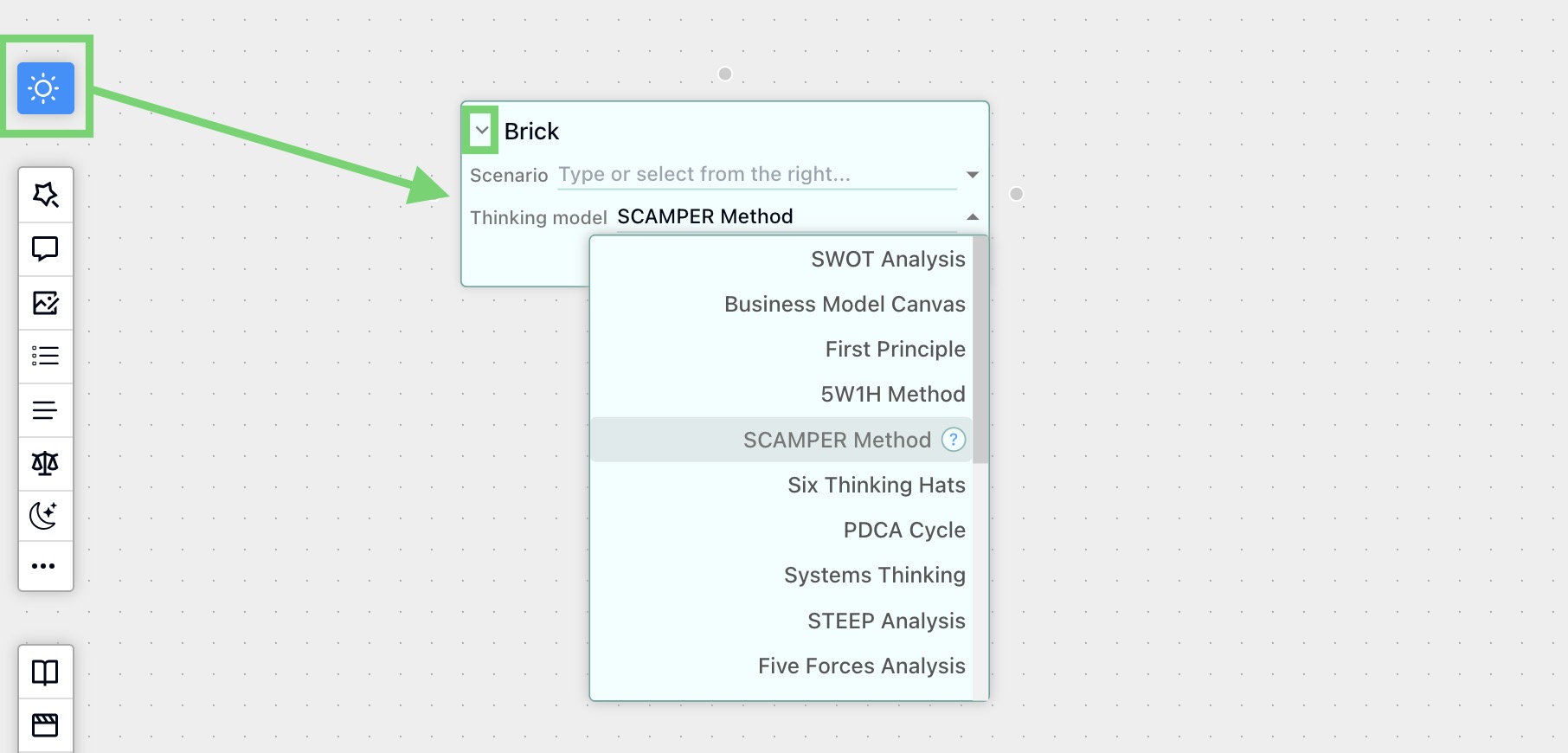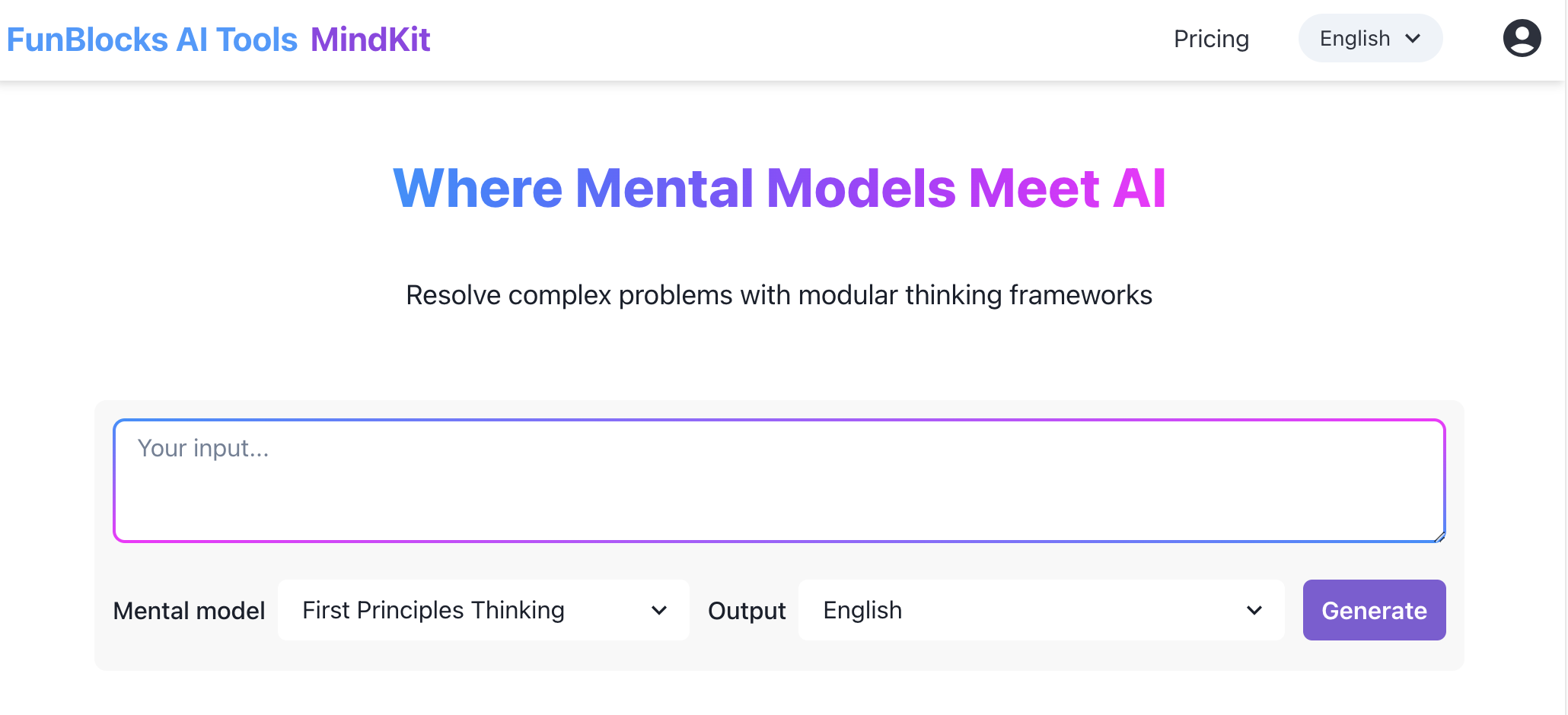Mental Models
Frameworks for Understanding the World
Why do some people seem to make consistently better decisions or grasp complex situations more quickly? Often, the difference lies in their mental toolkit – specifically, their understanding and application of mental models. This guide introduces the concept of mental models, highlights some powerful examples, and shows how FunBlocks AIFlow can help you learn, visualize, and apply them.
What are Mental Models?
A mental model is simply an explanation of how something works. It's a concept, framework, or worldview that you carry in your mind to help you understand the world and make decisions. Think of them as simplified maps of reality stored in your brain.
Key Characteristics:
- Simplification: They reduce complex realities into understandable frameworks.
- Incompleteness: No single model perfectly represents reality; they are approximations.
- Evolvability: Your understanding of models can deepen, and you can acquire new ones over time.
We all use mental models unconsciously, but consciously learning and applying a diverse range of robust models can dramatically improve our thinking.
Why Learn and Apply Mental Models?
Building a "latticework" (as Charlie Munger calls it) of mental models offers significant advantages:
- Understand Complex Systems: Grasp the underlying dynamics of situations in business, science, or everyday life.
- Make More Accurate Predictions: Better anticipate the consequences of actions or events.
- Avoid Cognitive Biases: Recognize common thinking traps and make more rational choices.
- Facilitate Cross-Disciplinary Learning: Apply concepts from one field (like physics) to understand problems in another (like economics).
- Improve Decision Quality: Equip yourself with proven frameworks for analyzing situations and choosing the best course of action.
Examples of Powerful Mental Models
There are hundreds of mental models across various disciplines. Here are a few fundamental ones:
- From Engineering/Physics:
- Feedback Loops: Understanding how outputs of a system can circle back to influence inputs (reinforcing or balancing). Example: Compound interest, thermostat.
- Redundancy: Building in backups to prevent system failure. Example: Airplane systems, data backups.
- Margin of Safety: Operating with a buffer to account for unknowns or errors. Example: Building bridges stronger than needed.
- From Economics/Business:
- Supply and Demand: How price is influenced by the availability of goods and consumer desire.
- Opportunity Cost: The value of the next best alternative foregone when making a choice. Key for evaluating investments or time allocation.
- Economies of Scale: Cost advantages gained by increased production volume.
- Pareto Principle (80/20 Rule): Roughly 80% of effects come from 20% of causes. Useful for prioritizing effort.
- From Psychology/Decision-Making:
- Second-Order Thinking: Considering the consequences of the consequences of your actions, not just immediate effects. Crucial for strategic decisions.
- Confirmation Bias: The tendency to search for, interpret, favor, and recall information that confirms pre-existing beliefs. Awareness helps combat it.
- Availability Heuristic: Overestimating the importance of information that is easily recalled (e.g., recent or vivid events).
- First Principles Thinking: Breaking down a problem into its most basic, fundamental truths and reasoning up from there, rather than relying on analogy or convention. Powerful for innovation.
- From Systems Thinking:
- Leverage Points: Places within a complex system where a small shift can produce significant changes.
This is just a small sample. The goal is to build a diverse collection.
How to Build Your Mental Model Latticework
Acquiring and internalizing mental models is a lifelong pursuit:
- Read Widely: Explore foundational books and concepts across different fields (psychology, economics, physics, biology, history).
- Reflect on Experience: Analyze your successes and failures through the lens of different mental models.
- Learn from Others: Study how successful thinkers and leaders apply these concepts.
- Apply Actively: Consciously try to use relevant models when analyzing problems or making decisions.
How FunBlocks AIFlow Helps You Master Mental Models
FunBlocks AIFlow provides a unique space to engage with and apply mental models:
- Apply Models to Cases: When analyzing a specific problem or case study, explicitly pull in relevant mental model frameworks. Use them to structure your analysis.

- Idea Generation for Any Topic: With the AIFlow mindmap, you can brainstorm ideas on any subject using pertinent mental models. Simply hover over the item and click the ideation button on its right side.

- FunBlocks AI Tools - AI MindKit: Based on AIFlow, FunBlocks AI Tools offers a convenient application specifically designed to facilitate the use of mental models for topic exploration, problem analysis and resolution.

Summary & Continuous Learning
Mental models are powerful tools for thinking more clearly and effectively. Building your latticework takes time and effort but yields immense rewards.
Use FunBlocks AIFlow to visualize, organize, and actively apply these frameworks to real-world challenges. Enhance your decision-making toolkit today! See how all these methods come together in our Integrated Workflow Guide.